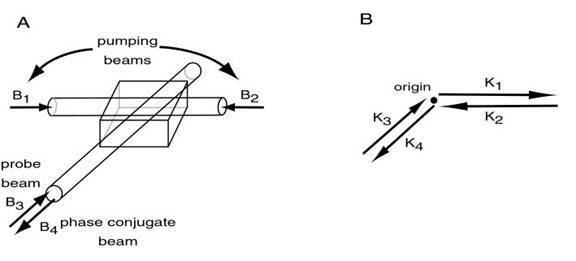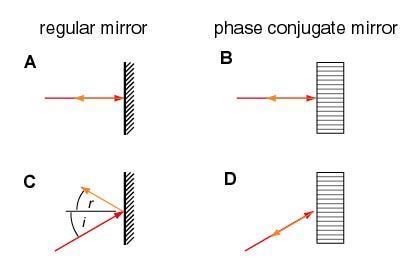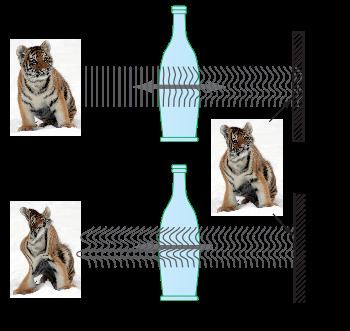 | ||
Phase conjugation is a physical transformation of a wave field where the resulting field has a reversed propagation direction but keeps its amplitudes and phases.
Contents

Sacred geometry with dan winter
Description

It is distinguished from Time Reversal Signal Processing by the fact that phase conjugation uses an holographic or parametric pumping whereas time reversal records and re-emits the signal using transducers.

Both techniques allow an amplification of the conjugate wave compared to the incident wave.

As in time reversal, the wave re-emitted by a phase conjugation mirror will auto-compensate the phase distortion and auto-focus itself on its initial source, which can be a moving object.
Time reversal has a remarkable property of reflected wave fields. Phase conjugation of wave field means the inversion of linear momentum and angular momentum of light.
Phase conjugation methods exist in two main domains:
